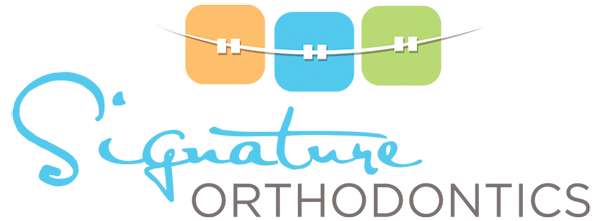Life with Braces

So you have braces, what's next?
When most people think about having braces, they assume that there will be many foods and activities that they will not be able to enjoy. Well, have no fear because while getting braces can mean doing things a little differently for a while, it should not cause major changes in your day-to-day activities. You will still be able to enjoy eating out, singing, playing a musical instrument or sport, or even having pictures taken. We will be happy to answer any questions you may have about life with braces.
First Days in Braces
Especially in the beginning, try to choose softer foods and cut larger foods into smaller pieces rather than trying to bite through them. Chop whole fruits such as apples or pears into bite-sized pieces before eating and you should always avoid chewing on ice.
After eating, you should always check your braces for any loose or broken appliances. If you find any problems, please give our office a call so that we can make any needed adjustments.
Examples of Foods that You Can Eat:
- Fruits: Applesauce and Bananas
- Vegetables: Mashed Potatoes, Beans, and other Steamed Veggies
- Breads: Pancakes, Muffins (without nuts), Soft Torillas
- Grains: Rice and Pasta
- Meats and Seafood
- Dairy Items: Yogurt and Soft Cheeses
- Treats: Ice Cream, Cake, Soft Cookies, and Pudding
Examples of Foods to Avoid:
- Hard Foods such as Nuts, Hard Candies
- Whole Foods such as Apples, Pears, Celery
- Chewy Foods such as Bagels, Granola Bars, Gummy Candies
- Crunchy Foods such as Tortilla Chips, Pretzels, Cheetos
Try to avoid any food that is particularly hard, chewy, crunchy or sticky. These types of foods can loosen, bend, or even break your brackets or appliances.
Carefully follow any instructions you are given regarding your orthodontic care. It is important to keep your teeth and braces as clean as possible so be sure to brush thoroughly after any meal or snack. It’s also a good idea to carry a travel toothbrush with you in case you need to brush your teeth while you are out. Always brush and floss your teeth thoroughly before going to bed at night. This is an important step in maintaining your oral health while on your way to a straighter smile.
Always use a soft rounded-bristle toothbrush that is in good condition. When wearing braces, toothbrushes will wear out faster and will need to be replaced more often. Remember to brush your tongue and rinse your mouth thoroughly after brushing.
While flossing may take a little more time and practice when wearing braces, it is also a vital part of good oral hygiene during orthodontic treatment. Using a floss threader may be necessary to get the floss under the arch wire. You should always make sure you clean along and under the gum lines with floss each night before going to bed.
After you have brushed and flossed, your braces should look clean and shiny, making it easy to see the edges of the braces.
If you have any tips or tricks to make brushing or flossing easier, please let us know at your next appointment.
Yes, you can still play your favorite sports while wearing braces! As an athlete receiving orthodontic treatment, it is important that you wear a custom mouth guard to protect your teeth and gums.
Our office can make a custom mouth guard that is fitted to your mouth for the highest level of both comfort and protection. Be sure to bring your mouthguard to your orthodontic appointments so we can check it for wear and tear and to be sure it still fits you well.
If you do experience an accident while playing sports, be sure to check both your mouth and your orthodontic appliances for any signs of damage. If any of your teeth feel loose or any appliances are broken, please give our office a call. Gently rinsing your mouth with warm salt water can help alleviate discomfort and expedite healing. You can also apply dental wax to any loose appliances that might causing discomfort.
Dental wax can a very useful tool to keep on hand while you are wearing braces. Take a small piece of dental wax between your fingertips and roll it into a ball. Gently press the ball over any orthodontic brackets or wires that might be irritating your mouth or gums. At your appointment, please let us know if you are having to use wax regularly so that we can make any necessary adjustments.
During your orthodontic treatment, Dr. Sydlewski may utilize elastics, more commonly known as "rubber bands," to make adjustments to your overall bite pattern and arch development. Typically attached from brackets on the upper arch to brackets on the lower arch, elastics use tension to create subtle changes in the teeth and bite.
When you start wearing elastics, you may experience some tenderness, but the tenderness should subside after a few days. Over the counter medications like Ibuprofen should help, but if the soreness continues for more than a week, please give our office a call.
It is very important that you always wear your elastics as directed. Wearing your elastics only occasionally will prolong your overall orthodontic treatment and may also cause you to experience persistent tenderness.
Things to Remember about Rubber Bands:
- Please remove your elastics when eating and brushing your teeth.
- You should always replace your elastics after brushing your teeth.
- If one rubber band breaks, please replace both the broken one and the adjacent one so that the same amount of force is applied on each side.
- You should always carry extra elastics in case one should break.
If you think you might run out of elastics before your next appointment, please give us a call and we can mail extras to you.
- Please be sure to wear your appliance as instructed by our office. Doing so will help reduce your treatment time and will also ensure that you receive the best possible results from your orthodontic treatment.
- Please place your appliance in the provided case any time it is not being worn. Placing your appliance in or on a napkin increases the likelihood of your appliance being accidentally thrown away!
- Please clean your appliance both morning and night to remove dental plaque. You can clean the appliance with a toothbrush and toothpaste.
- If you have pets, please do not place your appliance anywhere that your pet can reach them. Pets have been known to LOVE to chew on orthodontic appliances!
- You may remove your appliance while participating in physical activities, but be sure to wear a mouthguard to protect your teeth, gums and lips. Our office can create a custom mouthguard for you that will protect your teeth and gums.
- Please be sure to bring your appliance to every orthodontic appointment so that we can check it for fit and for wear and tear.
Keep these materials on hand to help with most common orthodontic maintenance needs and minor emergencies:
- Interdental or Proxabrushes fit between teeth and can help clean around wires without causing damage to them.
- Non-medicated orthodontic wax can be placed over brackets or wires that may be irritating gum tissues.
- Antibacterial Mouthwash can be used to reduce inflammation and to help prevent infection. For minor sores in the mouth, Peroxyl, an antiseptic rinse that contains hydrogen peroxide, may be used up to 4 times per day after brushing.
- Dental floss, a Water Pik, or an interproximal brush can be used to remove food that is caught between teeth or wires.
- A sterile pair of tweezers can be used to replace orthodontic rubber bands.
- A Q-tip or a pencil eraser can be used to push a wire that has come loose or that is irritating the cheeks or gums. If you are not able to comfortably reposition the wire, place some wax over the end of the wire and call our office so that we can set an appointment to get the wire put back in place.
- Salt can be used for warm salt-water rinses that can help heal sore gums and irritated oral tissues. Dissolve 1 tsp. of salt in 8 oz. of warm water and rinse up to 4 times a day.
- Non-prescription pain relievers such as Acetaminophen or Ibuprofen can help alleviate the temporary discomfort that sometimes occurs for the first day or two following an orthodontic adjustment.
- Topical Anesthetic Treatments such as Orabase or Ora-Gel can be applied to any abrasions or sores in the mouth.
Wearing Your Aligners
- Wear each set of upper and lower aligners for two weeks unless otherwise instructed by Dr. Sydlewski.
- Be sure to wear your aligners in the correct numerical order. (Each aligner is labeled by number and with a U or an L to designate upper or lower.)
- Use your fingers to put your aligners in place. First, place the aligners over your front teeth and use your fingers to gently push the aligner down over your molars. When correctly inserted, your aligners will sit all the way down on the teeth, leaving no space between the top of the aligners and the top of the teeth.
- Aligners will fit tightly at first, but should fit well at the end of the two week period.
- To remove the aligner, simultaneously lift the aligner up from both sides of your back teeth, and then remove it from your front teeth.
- Wear your aligners continuously, except when flossing, brushing, or eating. We also recommend that you remove the aligners when drinking warm beverages such as coffee or tea.
Caring for Your Aligners
- Always place your aligners in their provided case any time they are not being worn. Many aligners have accidentally been thrown out when they are placed in or on a napkin or tissue.
- If you have pets, be careful not to place your aligners anywhere that your pets can reach them. Aligners can easily become very expensive chew toys!
- Clean your aligners using a soft toothbrush and toothpaste. You should avoid using denture cleaner, alcohol, or bleach to clean your aligners.
- Please do not chew gum or smoke while wearing your aligners. Both habits can damage the aligners.
- Be sure to keep all of your old aligners and bring them to your orthodontic appointments.
Just in Case
- If you lose the tab that is attached to your tooth that helps the aligner snap in place, please call our office so that we can determine if you need to come in before your next scheduled appointment.
- If you lose one of your aligner trays, it is extremely important to continue to wear a tray to prevent teeth from shifting.
- If you have the next tray available, go ahead and wear it. If not, please wear the previous tray to prevent shifting.
- If you lose a tray, please call our office and let us know so that we can determine if a replacement tray is needed or if treatment can continue with the next tray. If a another tray is needed, there may be a replacement fee.
